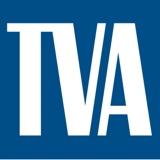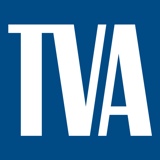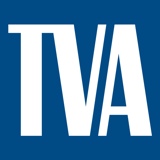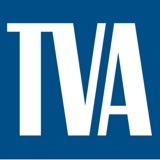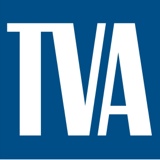Information
-
Document No.
-
Audit Title
-
Site:
-
Department:
- CONTRACTOR
- MAINTENANCE
- OPERATIONS
- OUTAGE
- ENGINEERING
- TECH TRAINING
- LEADERSHIP
- SAFETY
-
Conducted on:
-
Prepared by:
-
Location:
-
Paired Observer:
PPE (Personal Protective Equipment)
-
Eyes & Face Protection - Appropriate eye/face protection worn for he job in good condition, fits properly, and is adequate for the task
- Safe
- At-Risk
- Not Observed
-
Comment:
-
Add media
-
Hearing Protection - used in areas and for tasks that require it. Hearing protection fits properly.
- Safe
- At-Risk
- Not Observed
-
Comment:
-
Add media
-
Head Protection - Hardhats are worn in areas that require them, and they are free from cracks or defects.
- Safe
- At-Risk
- Not Observed
-
Comment:
-
Add media
-
Hand & Arm Protection - appropriate gloves are worn for the task. Arm protection is worn when required. They are in good condition and fit properly.
- Safe
- At-Risk
- Not Observed
-
Comment:
-
Add media
-
Respiratory Protection - is worn properly where hazard exists, fits properly, and is the appropriate type.
- Safe
- At-Risk
- Not Observed
-
Comment:
-
Add media
-
Arc Flash Protection - worn when required
- Safe
- At-Risk
- Not Observed
-
Comment:
-
Add media
-
Fall Protection - is used where required.
- Safe
- At-Risk
- Not Observed
-
Comment:
-
Add media
-
Foot Protection - Steel/composite toe shoes or boots are worn where required, protection is adequate for the task being completed, and PPE fits properly and is in good condition.
- Safe
- At-Risk
- Not Observed
-
Comment:
-
Add media
Proper Use of Tools & Equipment
-
Right Tool for the Job - employee selected the right tool for the intended task to complete the task safely.
- Safe
- At-Risk
- Not Observed
-
Comment:
-
Add media
-
Proper Condition - the tool or piece of equipment is in proper condition to allow the employee to perform the task safely.
- Safe
- At-Risk
- Not Observed
-
Comment:
-
Add media
-
Current Inspection - the tool or equipment was properly inspected before use, color coding is correct, and the daily use sheet (equipment) has been completed by the operator before use.
- Safe
- At-Risk
- Not Observed
-
Comment:
-
Add media
-
Correct Usage - tool is used in a safe manner and the way it was intended.
- Safe
- At-Risk
- Not Observed
-
Comment:
-
Add media
Housekeeping
-
Cords, Hoses, Leads - are elevated or covered so that they are not creating a tripping hazard.
- Safe
- At-Risk
- Not Observed
-
Comment:
-
Add media
-
Material Stored Properly - materials in the work area is stored properly so that it does not create a safety, trip or slip hazard to the workers in the area or passes by.
- Safe
- At-Risk
- Not Observed
-
Comment:
-
Add media
-
Trash/Debris - work area is clutter free, ladder access is kept clear, and materials are disposed of properly (wood, paper, steel, etc.)
- Safe
- At-Risk
- Not Observed
-
Comment:
-
Add media
-
Compressed Gas Cylinders - are stored properly. Torch rigs are broken down and caps installed on cylinders when not in use and transported in appropriate carts when moved.
- Safe
- At-Risk
- Not Observed
-
Comment:
-
Add media
Work Position
-
Pinch Points - employee avoids pinch points by keeping body parts and clothing from between moving and stationary parts that may close together, including rotating parts.
- Safe
- At-Risk
- Not Observed
-
Comment:
-
Add media
-
Eyes on Path or Task - employee looks for hazards in the the direction they are moving, paying attention to the task in front of them in regards to hazards.
- Safe
- At-Risk
- Not Observed
-
Comment:
-
Add media
-
Line of Fire - employee avoids placing parts of the body in spots where they can be struck, sprayed, hit by steam, liquid, air gas or projectiles trapped by a stored energy release.
- Safe
- At-Risk
- Not Observed
-
Comment:
-
Add media
-
Climbing / Transit - employee ascends/descends in a safe manner, maintaining two points of contact on stairs and three points of contact when using a ladder.
- Safe
- At-Risk
- Not Observed
-
Comment:
-
Add media
-
Lifting Techniques - employee uses proper lifting techniques.
- Safe
- At-Risk
- Not Observed
-
Comment:
-
Add media
Job Factors
-
Pre-Job Planning - potential hazards identified & discussed through the proper execution of pre-job briefings, JSAs, and HU Tools when required. Established procedures being followed/used.
- Safe
- At-Risk
- Not Observed
-
Comment:
-
Add media
-
Work Area - surfaces are adequate for employees to be working on and are free from hazards such as slips/trips, inadequate lighting, and temperature extremes.
- Safe
- At-Risk
- Not Observed
-
Comment:
-
Add media
-
Barricade Use - hazards within the work area are properly barricaded and labeled for employee protection.
- Safe
- At-Risk
- Not Observed
-
Comment:
-
Add media
-
Scaffolding (inspection, etc.) - being used have a tag and current inspection date and are in safe condition.
- Safe
- At-Risk
- Not Observed
-
Comment:
-
Add media
-
Communication - employees conducting the task properly communicate and discuss job hazards/components and understand and use HU Tools, STOP when unsure, phonetic alphabet, and 3-way communication.
- Safe
- At-Risk
- Not Observed
-
Comment:
-
Add media
-
Job Completion - employee's work area is free from debris and work area is clean when work is completed.
-
Comment:
-
Add media
Employee Feedback/Comments:
-
Note here:
